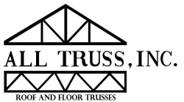As certain areas in the country, including Northern Ca have moved into a housing and commercial facility boom, everyone wonders what the top trends are that will help keep their businesses ahead of the pack for the rest of 2015 and 2016. Here’s what a leading prognosticator has to say.
- More commercial contracts will be green.
Green building is trendy and cost-effective. In fact, according to McGraw Hill Construction, up to 48% of new nonresidential construction projects will be green. That’s a $145 billion opportunity for construction firms. Additionally, the call to continue greening existing buildings will only continue to rise. And while there’s skepticism that LEED will keep dominating the green space, many firms will turn to green construction management software to help please their eco-conscious customers.
- Construction companies will continue ditching paper.
Paper is so 2010. Many companies are already switching over to construction management software with document management capabilities—saving some companies up to $5,000 a year. With more construction managers choosing to write, process, and submit their RFDs, project updates, applications, LEED forms, invoices, and contracts online, even smaller remodeling companies will start making the switch.
- Mobile apps with geo-fencing will boom in popularity.
A geo-fence is a virtual barrier. It uses GPS to track where an object (like a cell phone) is. With so many contractors relying on time-tracking software to figure out what to pay whom, geo-fencing applications are particularly helpful—with applications like Timesheet Mobile, setting geo-fencing parameters can help construction managers better manage their payroll as the system will log when an employee is on- or off-site, without manually having to add hours. There are lots of construction-specific mobile apps that provide this service, like Red-Trac and Labor Sync, but expect this trend to grow ever more popular over the coming year.
- 3D printing will make its way onto more construction sites.
3D printing: it’s flashy, it’s newsy, and it’s the future of the construction industry. With more commercial firms focusing in on green construction, cost-conscious managers will continue turning to this tool. In fact, according to Gartner, worldwide shipments of 3D printers will increase 101% (from 108,151 to 217,350 units) over 2015 alone. That said, construction is notoriously a conservative industry when it comes to technical innovation. Constructech warns, “3D printing probably will not infiltrate the core of the industry until it has been tested and proven in other industries.” With that said, the construction industry will likely mass-adopt 3D printers before the end of this decade.
So get your FSC providers lined up (like All Truss!). Improve your use of technology including construction management software and applications that will help you maximize your valuable team member’s time!
Rachel Burger of Capterra



